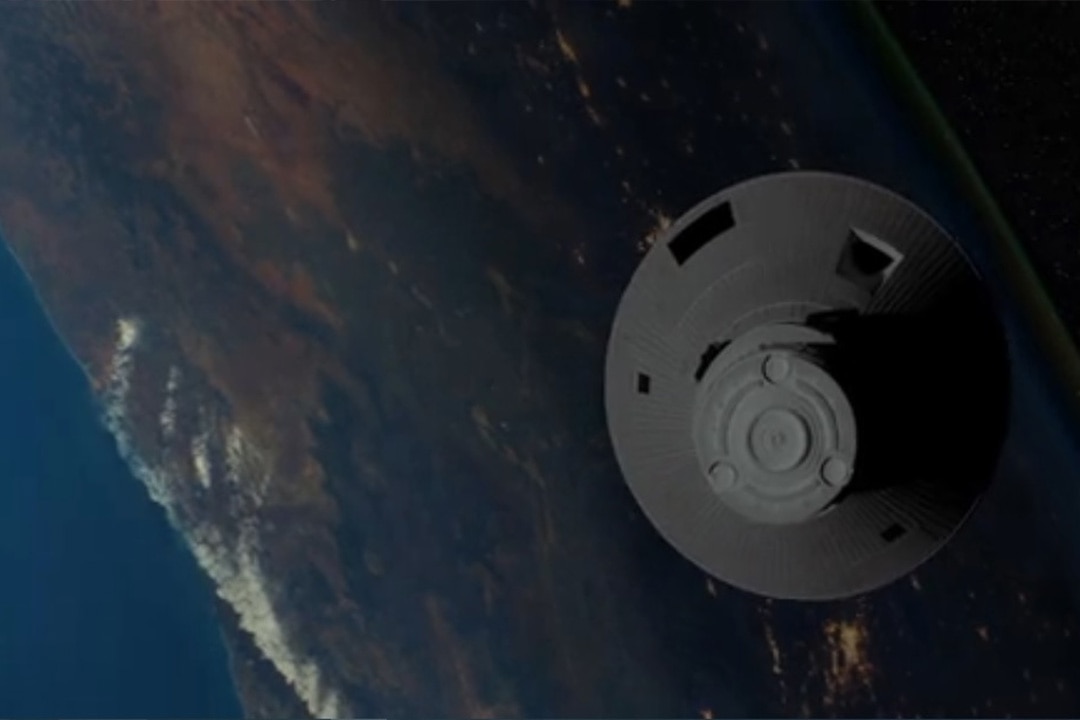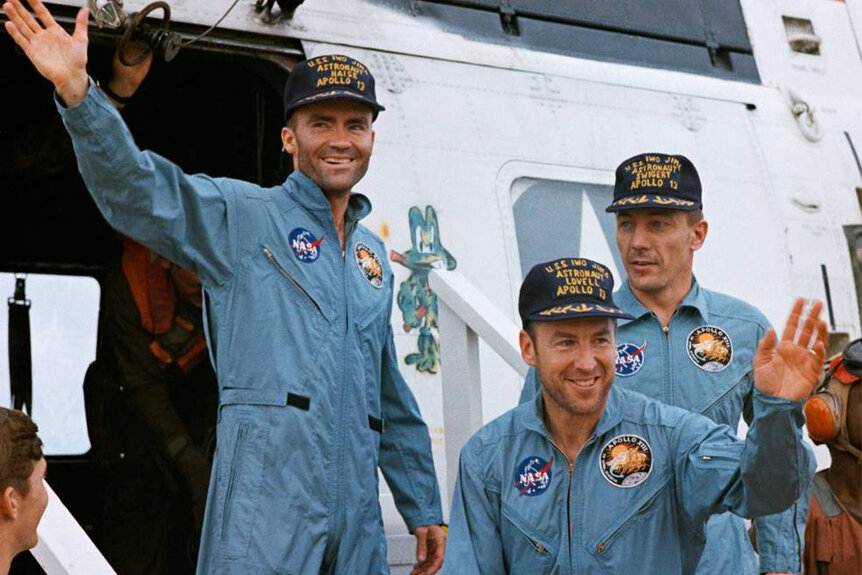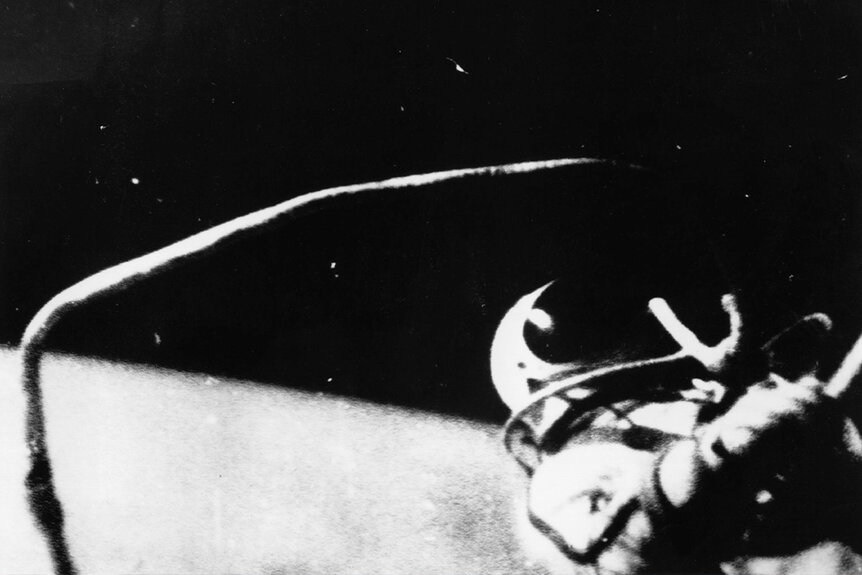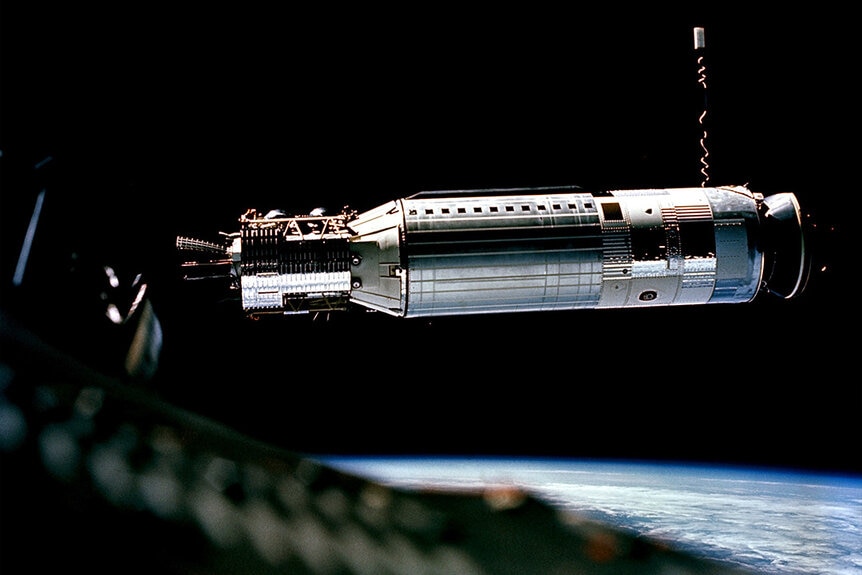Create a free profile to get unlimited access to exclusive videos, sweepstakes, and more!
The science behind 'Capsule': Three of the most harrowing real-life space missions in history
It’s dangerous business, going out your front door… especially if that door is the airlock of a spacecraft.

The 2015 science fiction film Capsule (now streaming on Peacock!) takes viewers to an alternate reality in which the United Kingdom launched the first crewed space mission in 1959. The story follows Guy Taylor (Edmund Kingsley), a British test pilot who is chosen to become the first human being in space.
What begins as a triumph of science and exploration quickly turns to disaster when the capsule begins to malfunction. Suddenly, Guy is in a solo fight for his life, farther from home than anyone has ever been before. Capsule attempts to capture the very real dangers of space exploration and bottle them into a 91-minute cinematic experience. While the events of the film didn’t actually occur, they very well could have. Space exploration necessarily exists at the edge of human capability and knowledge.
RELATED: Artemis I returns! What’s next for the Artemis program?
Every time we send an astronaut beyond the bounds of our home planet, we’re asking them to set foot somewhere without knowing for sure there will be anything there to catch them. As a result, there are more than a few real-life space missions which make anything we see at the movies look like a walk in the park.
APOLLO 13
How could we talk about space exploration gone wrong without mentioning the most famous rescue mission of all time? Apollo 11 proved to NASA and the rest of the world that they could successfully deliver a crew to the lunar surface and return them safely home. The next crewed mission, Apollo 12, proved that it wasn’t a fluke. Charles Conrad, Richard Gordon, and Alan Bean went to the Moon and sent back the first full-color pictures of the surface. Owing to the lunar landscape and the fashion choices of spacesuit designers, the colors of the flag and the gleaming gold of the lander stand in stark contrast to the largely black and gray background. By the time we got to Apollo 13, we were starting to feel like seasoned pros, which means it was time for something to go seriously wrong.
The mission launched from the Kennedy Space Center on the afternoon of April 11, 1970. Early on, there was an issue with one of the second-stage engines, causing it to shut down early. In order to compensate and achieve the desired orbit, the other engines worked a little overtime. If that were all that had gone wrong, Jim Lovell and Fred Haise might have become the fifth and sixth persons to walk on the Moon, but it wasn’t meant to be.
Approximately 56 hours into the mission and at a distance of 180,000 miles from home, there was an explosion which nearly claimed the lives of the crew. Earlier, a sensor in one of the ship’s external oxygen tanks returned an unusual reading. Those tanks are equipped with internal fans which mix the contents to ensure they remain equally distributed. Ground control thought that a mix might clear up any stratification in the tank and return a better reading, so they ordered the fans turned on. A minute and a half after the stir, a bang rocked through the ship, spelling the end of the mission.
RELATED: 'Apollo 13' cinematographer and production designer reflect on Ron Howard's inspiring masterpiece
When the crew initiated a stir of the tanks, electricity coursed through the wires on its way to the fans. Along the way, it encountered a piece of damaged insulation which caused a short and quickly caught fire. The heat of the blaze increased pressure inside the tank until it failed. The force of the explosion caused an oxygen leak and jammed a couple of fuel cells closed. The remaining fuel cells, themselves dependent on oxygen for their reactions, failed in quick succession. The crew moved to the lunar module, which had full batteries and oxygen tanks, and used it as a lifeboat to slingshot around the Moon on a return trip to Earth. Then they made a movie about it, which you can watch on Peacock!
THE FIRST SPACEWALK
While NASA was the first (and so far only) space agency to successfully land people on the Moon, the early years of the space race were driven in large part by the successes of the Soviet space program. In 1965, they achieved one of many firsts when cosmonaut Alexei Leonov exited his craft to float freely (connected by a tether) in the vacuum of space for the very first time.
That first spacewalk, which took place on March 18, 1965, was certainly an important moment in the progression of human space exploration, but it almost ended in disaster. Trouble began almost as soon as Leonov exited the craft. While the spacewalk only lasted 12 minutes in total, by the end Leonov reported swimming in his own sweat. The suit reportedly didn’t keep him appropriately cool, and Leonov was quickly dripping sweat, all of which collected in the feet of his suit where it sloshed around like his own private and particularly gross puddle.
Spacewalking in his own perspiration was only the beginning of Leonov’s problems. As soon as he exited the craft, his spacesuit ballooned to a much larger size, no longer under the influence of atmospheric pressure. The swelling prevented Leonov from operating a chest-mounted camera during the spacewalk, but more importantly it prevented him from fitting back into the airlock when he was finished. In a last ditch effort to get back inside, Leonov vented oxygen from his suit, dropping the pressure until he was small enough fit through the door. But get inside he did.
Leonov’s troubles weren’t over there, however. Once back in the craft, he and crewmate Pavel Belyayev still had to get home. Unfortunately, their craft’s retro rockets didn’t fire correctly during re-entry, and they had to land manually. They ended up in a snow-covered forest 386 kilometers from the planned landing zone. Because they landed in such a remote location and the tracking technology was only accurate to within 50 kilometers or so, it took hours for them to be found and days for them to be recovered.
GEMINI 8
Gemini was NASA’s second crewed spaceflight program, following Mercury. Its purpose was the development of spaceflight technologies and strategies which could be employed in the then-upcoming Apollo program. Gemini 8 was, as you might expect, the eighth mission in the program, and it was designed to test docking procedures between two orbiting craft. Previous Gemini missions had maneuvered two craft to within a foot of one another, but this was the first time astronauts were trying to connect two pieces of equipment in space, something which would be critical to the success of Apollo.
The mission launched on the morning of March 16, 1966 with David Scott in the pilot’s seat and none other than Neil Armstrong in command. The plan was for the Gemini Agena Target Vehicle (GATV) to launch first with Gemini, carrying the crew, to follow shortly thereafter. The GATV launched at 10:00 a.m. and Gemini 8 followed at 11:41 a.m. Both launches went smoothly and both craft achieved orbit as desired.
RELATED: From 'Apollo 13' to 'Gravity,' these are the most realistic space movies
After six and a half hours in low-Earth orbit, Gemini 8 docked with the GATV. After years of planning and no small amount of risk, the first successful docking in space was in the history books, but the celebration was to be short-lived. Twenty-seven minutes after docking was completed, both craft began spinning wildly out of control. In an attempt to slow their rotation, Armstrong decoupled Gemini from the GATV, but that only made things worse. Gemini began spinning more and more rapidly, approaching a rate at which Scott and Armstrong were at risk of losing consciousness.
Fortunately, Armstrong and Scott succeeded at reducing the spin and stabilizing the craft, but they used up three quarters of their fuel to do it. What was supposed to be a three day mission, including a spacewalk, had to be cut short. Armstrong and Scott returned home after only ten and a half hours.
Want to see if you’ve got the right stuff? Check out Capsule, streaming now on Peacock!





























